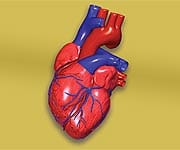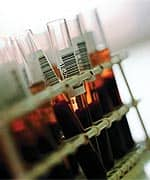Life Extension Magazine®
Health-conscious adults regularly monitor their cardiovascular risk factors—such as cholesterol, glucose, and homocysteine—in order to reduce their risk of debilitating cardiovascular disease. Now, intriguing new research suggests that vitamin D may play an essential yet overlooked role in staving off heart disease. Vitamin D deficiency may eventually be added to the list of causative factors that contribute to cardiovascular disorders. A growing body of research indicates that vitamin D deficiency contributes to a broad spectrum of conditions such as high blood pressure, poor insulin sensitivity, inflammation, and other fundamental processes that underlie heart disease. Alarmingly, vitamin D deficiency is extremely common throughout the population—affecting more than half of adults and the majority of the elderly.1 In this article, we’ll explore the epidemic of vitamin D deficiency, its detrimental effects on cardiovascular and whole-body health, and how you can protect yourself by maintaining healthy blood levels of vitamin D. If you look up “coronary risk factor” in any standard medical textbook, you’ll find a list that includes high cholesterol, diabetes, smoking, sedentary lifestyle, obesity, and hypertension. However, vitamin D status is not listed. Perhaps you’ll find vitamin D in the list of risks for childhood rickets and osteoporosis in females. But a coronary risk factor? You’ll not see it. New data, however, are suggesting a whole new panel of health effects previously unsuspected for this underappreciated vitamin. It may, in fact, be a crucial nutrient that plays a central role in coronary heart disease prevention. “Vitamin D deficiency and its consequences are extremely subtle, but have enormous implicationsfor human health and disease. It is for this reason that vitamin D deficiency continues to go unrecognized by a majority of health care professionals.” —Dr. Michael Holick, University of Boston Vitamin D Deficiency: A Modern Epidemic
Poor diet, sedentary lifestyles, and stressful schedules have contributed to today’s epidemic of cardiovascular disease. Interestingly, dietary and lifestyle factors are also linked with another potentially dangerous and possibly related epidemic—that of vitamin D deficiency. Human skin is rich with latent pre-vitamin D, which is activated by sunlight. Humans are meant to obtain vitamin D through sunlight exposure. Vitamin D is not contained to any significant degree in food, nor was it meant to be obtained through oral intake. But over the centuries, people have migrated to colder, sun-deprived climates, work indoors in offices or factories, travel by car, exercise in gyms rather than outdoors, and wear clothes that cover all but 5% of body surface area. In fact, even adults living in sunny Miami are likely to be deficient in vitamin D for at least part of the year.2 Oral intake of vitamin D has become necessary as humans developed lifestyles involving less and less sun exposure. Add to this the sun phobia fostered by dermatologists advising us that sun exposure causes skin cancer, and most of us are terribly sun-deprived and thereby unable to activate vitamin D. There are few dietary sources of vitamin D. An eight ounce glass of milk contains 100 IU, although this is often inconsistent.3,4 Other dairy products, like cheese and yogurt, tend to have little or no vitamin D added. Oily fish like salmon, mackerel, and sardines contain 200–360 IU vitamin D per 3.5 ounce serving. Many breakfast cereals contain 40–100 IU per serving.1 Despite this, many people fail to obtain even the modest “adequate” intake every day. Strict vegetarians and lactose intolerant individuals are especially likely to be substantially vitamin D deficient.5 Other people at high risk for vitamin D deficiency include: the elderly, who convert less vitamin D with sunlight exposure compared to younger people; the obese; and dark-skinned individuals, due to high melanin skin content.4,6
Vitamin D Recommendations Based on Fiction, Not FactsIn 1963, when the Institute of Medicine drafted the Recommended Daily Allowance (RDA) for vitamin D, there were literally no scientific data available to help determine requirements for optimal health. It was clear, however, that vitamin D was a necessary ingredient for health, since children who failed to receive at least 300–400 IU per day, usually supplemented as cod liver oil, developed “bow legs,” or rickets, due to abnormal bone maturation in the legs. But the vitamin D dose recommended for adults was purely—and admittedly—fabrication. It was based on a disease model—that is, the amount thought to prevent rickets, rather than the amount needed to promote optimal health, which may be far greater. “The basis for adult vitamin D recommendations [was] arbitrary. Thirty-six years ago, an expert committee on vitamin D could provide only anecdotal support for what it referred to as ‘the hypothesis of a small requirement’ for vitamin D in adults and it recommended one-half the infant dose, just to ensure that adults obtain some from the diet.” —Dr. Reinhold Vieth University of Toronto In the 1960s, the only known consequence of vitamin D deficiency in adults was osteomalacia, a form of bone softening. Administration of 200 IU per day of vitamin D was just enough to prevent osteomalacia. More recent vitamin D research, however, has uncovered the fact that exposure to just 10–20 minutes of sunlight yielded the blood-level equivalent of 10,000 units of vitamin D taken orally.7 Why would the naturally-intended source of vitamin D yield levels far beyond that specified by the RDA? Speculation grew that the true vitamin D requirement for health was far more than the RDA in the absence of substantial sunlight exposure. A study conducted during the winter months in Omaha, Nebraska, in healthy adult men showed that the participants utilized 3000–5000 international units of vitamin D per day to maintain a steady vitamin D blood level. The researchers concluded that the current RDA was inadequate to meet these requirements.8 Low government-issued vitamin D intake recommendations, along with deprivation of sunlight, has therefore resulted in a nation that is frightfully deficient in a crucial nutrient.
Further investigation using blood levels of vitamin D have uncovered the extraordinary prevalence of deficiency. A study of 1500 women receiving treatment for osteoporosis showed that 52% of participants were deficient (<30 ng/mL 25-hydroxyvitamin D); and 18% were severely deficient (<20 ng/mL 25-hydroxyvitamin D).9 The likelihood of vitamin D deficiency ranges from a low of 36% in healthy adults 18–29 years old, to 57% of a general adult population in the US, to as much as 100% in the elderly.1 North of 37 degrees latitude (approximately a line drawn horizontally connecting Norfolk, Virginia, to San Francisco, California), sunlight is insufficient to trigger vitamin D conversion in the winter months.10 Living in a southern climate is no guarantee that deficiency won’t occur. A study conducted in Miami, Florida showed that approximately 40% of 212 adults were deficient in winter, with a modest improvement in summer.2 Sunlight, Vitamin D, and Heart AttackThe farther north you live, the more likely you will suffer a heart attack.11 That curious observation led to the suspicion that vitamin D may somehow be related to the development of heart disease. It suggests that sunlight exposure may somehow provide a protective effect, perhaps through vitamin D. The notable exception to this pattern is the Eskimos, who eat large quantities of oily fish, a rich source of vitamin D and omega-3 fatty acids. An early hint that deficiency of vitamin D might be behind heart disease came from a New Zealand study of 179 people presenting with heart attacks. Heart attack sufferers proved to have lower vitamin D blood levels (25-hydroxyvitamin D) compared to people without heart attacks.12 A corroborating observation emerged from analysis of the enormous database of 259,891 heart attacks maintained by the National Registry of Myocardial Infarction. In this nationwide tabulation, heart attacks surged by 53% during sun-deprived winter months compared to summer.13 Further corroboration came from observations in sub-tropical climates, where intense sun shines year-round and seasonal variation in heart attack rates doesn’t occur.14 Unlike the large ranges in cold or hot weather found in temperate regions, the warm climate of a subtropical region does not affect the frequency of heart attacks. If vitamin D is indeed related to heart disease risk, then we would also expect to see fewer heart attacks in sunny climates and more heart attacks in cooler climates. Indeed, an exhaustive study performed by Dr. David Grimes and colleagues at the Blackburn Royal Infirmary in England demonstrated a consistent worldwide relationship between sunlight exposure and heart disease: the farther north in latitude, the more heart attacks occurred.11 Dr. Grimes and others have suggested that the vitamin D activated by sunlight is behind the reduced risk of heart disease.
Vitamin D: Essential for Heart HealthAbundant evidence now points to the numerous cardioprotective functions of vitamin D. Restoring vitamin D to normal levels has been found to help reduce inflammation, normalize blood pressure, and improve insulin sensitivity—all factors that reduce heart disease risk.15-18 Vitamin D deficiency has been shown to diminish contractile function of heart muscle cells, contribute to endothelial dysfunction, distort heart muscle structure (triggering hypertrophy, or abnormal heart muscle growth), and increase smooth muscle growth in the coronary artery wall—a process that leads to atherosclerotic plaque formation.19,20 Low levels of serum 25-hydroxyvitamin D have been linked with congestive heart failure, a condition in which the heart is unable to keep up with the body’s demands for blood and oxygen.21 A recent analysis showed that individuals with low serum levels of vitamin D had higher rates of high blood pressure, diabetes, and elevated triglycerides than those with higher vitamin D levels.22 Longstanding vitamin D deficiency is a major contributor to osteoporosis, and scientists have long known that women with osteoporosis are more likely to have coronary heart disease. The correlation between osteoporosis and heart disease may reflect common risk factors and mechanisms, such as estrogen and vitamin D.23 A study in 2,500 postmenopausal women showed a four-fold greater risk of heart attack in women with osteoporosis.24 A University of Illinois study showed that the computed tomography (CT) heart scan score (a measure of coronary atherosclerotic plaque) in women with osteoporosis averaged 222 (optimal is zero), while women with normal bone density had far lower average scores of 42.25 Similar findings have shown that higher levels of coronary calcification are found in those with lower levels of vitamin D.26,27 Vitamin D deficiency may extend to vascular disease beyond the coronary arteries. A recent Italian study determined that the greater the vitamin D deficiency, the more carotid atherosclerotic plaque was present, as assessed by carotid ultrasound. The authors concluded that low vitamin D blood levels were an independent and strong predictor of atherosclerosis. Diabetics were also twice as likely as non-diabetics to be severely vitamin D deficient.28 Some authorities have proposed that inadequate vitamin D is part of the reason for the extremely high incidence of cardiovascular disease in people with abnormal kidney function.29 People with little or no kidney function often have very low levels of vitamin D, since the kidney is required for its activation.30 A Japanese study in 240 people on dialysis for severe kidney disease suggested that treatment to correct vitamin D deficiency resulted in a dramatic reduction in heart attack and death from heart disease.31 Emerging science argues strongly in favor of vitamin D as an important risk factor for cardiovascular disease. Optimizing vitamin D status holds tremendous potential to safely, inexpensively, and dramatically reduce cardiovascular risk. “… there is a striking similarity between the benefits of vitamin D and the benefits of statin therapy. I believe that the unexpected and unexplained beneficial effects of statin therapy might be mediated by activation of vitamin D receptors by this group of drugs.” —Dr. David S. Grimes Blackburn Royal Infirmary, Lancashire, UK
| ||||||||
Cholesterol is Not EverythingJudging from the constant onslaught of drug company advertising, you’d think that a cure for coronary heart disease has been discovered, and that the cure is cholesterol-lowering statin drugs. Existing data show that this is clearly not the case. Risk for heart attack is certainly reduced, usually by about 25–30%, but not eliminated. Thus, statin drugs could only prevent about one in every three heart attacks.39 This is because there are many other causes for heart disease beyond LDL: low HDL, increased triglycerides, diabetes, inflammation, and hidden causes of heart disease like lipoprotein(a). But how about vitamin D? The scientific information so far is hugely promising. “I foresee an increasing number of studies linking vitamin D deficiency to most of the diseases of modern civilization. Furthermore, I foresee a backlash by many in organized medicine who simply cannot accept the possibility that such a simple and cheap compound can have such health benefits. I foresee lawsuits against practicing physicians who don’t accept the importance of vitamin D. For example, researchers at Harvard just announced that the five year survival for patients with early stage, non-small cell carcinoma of the lung was almost three times better in those with evidence of the highest vitamin D levels compared to those with the lowest. Five-year survival for those with the highest levels approached 80%! I predict similar claims will be filed against cardiologists for letting heart disease patients die vitamin D-deficient as the evidence mounts that vitamin D prevents and treats heart disease.” —Dr. John Cannell The Vitamin D Council www.vitamindcouncil.com Optimizing Vitamin D Levels
Given the vast benefits of vitamin D for cardiovascular and whole-body health, ensuring optimal vitamin D status is an essential part of every wellness program. The best way to know your vitamin D status is to have your doctor measure the blood level of 25-hydroxyvitamin D (not to be confused with 1,25-dihydroxyvitamin D). The minimum level of 25-hydroxyvitamin D required for health is controversial, and can also vary by the method used for measurement. However, most authorities have argued that a rock-bottom minimum 25-hydroxyvitamin D level of 30 ng/mL, or 75 nmol/L, is the point at which phenomena associated with deficiency begin to be corrected.40 Noted vitamin D authority Dr. Reinhold Vieth of the University of Toronto has argued that a blood level of 40 ng/mL (100 nmol/L) should be achieved.7 Dr. Michael Holick of the University of Boston proposes that serum level of 25-hydroxyvitamin D is in the range of 30-50 ng/mL (75-125 nmol/L).34 Another study showed that elderly men and women were at an increased risk of bone loss when their levels of 25-hydroxyvitamin D fell below 45 ng/mL (110 nmol/L), suggesting that maintaining 25-hydroxyvitamin D above 45 ng/mL may be crucial for all aging adults.41 If vitamin D levels are low, consider supplementation to help reverse a vitamin D deficiency. Re-checking your vitamin D status after several months of supplementation is prudent to ensure that a deficiency has been averted. New studies are showing that the dose required to achieve a healthy blood level of vitamin D is somewhere in the neighborhood of 1,000–4,000 IU per day in the absence of sun exposure.42 That’s more than five times the Institute of Medicine’s recommended adequate intake, though still less than obtained through several minutes of midday sun exposure. Vitamin D toxicity does not usually develop unless vitamin D intake exceeds 10,000 units per day or blood levels exceed 80 ng/mL (200 nmol/L).1,7 In fact, some scientists believe that the tolerable upper intake level of vitamin D intake should be revised from 2,000 IU/day to 10,000 IU/day.43
If you live in the northern US (states like Massachusetts, New York, Pennsylvania, Wisconsin, Michigan, the Dakotas, etc.), Canada, or northern Europe, there’s a high likelihood that you’re deficient. If you’re like most Americans, you get sun sporadically during summer weekends, and virtually none from September to April. Dark-skinned individuals are at even greater risk of vitamin D deficiency, since melanin pigment in skin acts as a natural sunscreen. Dark-skinned individuals require around five times longer sun exposure to obtain the same amount of vitamin D as fair-skinned persons. African-Americans, for this reason, are among the most vitamin D deficient of all. Ten minutes of sun exposure in midday, wearing shorts and t-shirt to expose skin surface area, will provide most Caucasians plentiful vitamin D during the summer. This limited time minimizes the risk of skin cancer. (If you are especially fair-skinned, you might do fine with somewhat less.) If you are in the sun any longer than this, you should apply a sunscreen (which blocks both sunlight as well as vitamin D activation in the skin).
However, if sun exposure is sporadic, supplementation is crucial to obtain the full benefit of vitamin D’s panel of biologic effects. Vitamin D3 (cholecalciferol) is preferable to vitamin D2 (ergocalciferol), as it is absorbed 70% better than D2 and it more effectively increases blood levels.44 Many vitamin D supplements contain only 400 IU per capsule or tablet. More and more manufacturers are producing 1,000 and 5,000 IU capsules to suit the growing demand for higher dose vitamin D supplements. In northern climates or sun-deprived lifestyles, 1,000 IU per day is a reasonable starting dose. You may wish to consult your physician and check your blood level of vitamin D to determine if even higher doses of vitamin D are appropriate for you. To obtain a dose of 1,000–2,000 IU or more per day, a specific vitamin D supplement will be required, rather than a combination supplement with calcium or other nutrients. Note the quantity of vitamin D (if any) included with your other supplements, such as calcium and multivitamins (usually 200–400 IU), and reduce the amount of specific vitamin D accordingly (to equal your total desired dose).
Supplementing with very high doses of vitamin D over an extended period of time can lead to elevated blood calcium levels, which can adversely affect nerve and muscle function, and can contribute to kidney stones.45-48 Individuals using large doses of vitamin D should be carefully monitored for signs and symptoms of vitamin D toxicity such as poor appetite, constipation, weakness, heart arrhythmias, and elevated blood levels of cholesterol, calcium, or liver enzymes.49 Individuals with hypercalcemia (high blood calcium levels) should not take vitamin D.49 If you have kidney disease or if you use digoxin or other cardiac glycoside drugs, consult a physician before using supplemental vitamin D.4 “Personally, I take 5,000 units in the late fall, winter, and early spring, and then I vary doses the rest of the time depending on sun exposure. I also have my 25-hydroxyvitamin D level checked twice a year, once in the early spring and again in the early fall. My 10-year old daughter takes 2,000 units a day in the winter months, and my three year old takes 1,000 units a day in the winter.” —Dr. John Cannell The Vitamin D Council www.vitamindcouncil.com Conclusion
The understanding of vitamin D is rapidly evolving. Compelling and substantial evidence suggests that most people—particularly those living in northern climates or with limited sun exposure—are substantially deficient. Replenishing vitamin D can help normalize blood pressure, support healthy blood sugar, improve insulin resistance, and dampen inflammation—all processes that contribute to heart disease. Growing evidence is adding support to the idea that vitamin D deficiency contributes to coronary risk, and that replacement of vitamin D can reduce risk. The vitamin D in dairy products and foods fails to provide sufficient quantities for the majority of Americans. In the absence of substantial sun exposure every day, vitamin D replacement is required in order to achieve adequate blood levels of this essential nutrient. Dr. William Davis is an author and cardiologist practicing in Milwaukee, Wisconsin. He is author of the book, Track your Plaque: The only heart disease prevention program that shows you how touse the new heart scans to detect, track, and control coronary plaque. He can be contacted through www.trackyourplaque.com. If you have any questions or wish to discuss any aspect of this article, please call one of our Health Advisors at 1-800 226-2370. | ||||||
| References | ||||||
| 1. Holick MF. High prevalence of vitamin D inadequacy and implications for health. Mayo Clin Proc. 2006 Mar;81(3):353-73. 2. Levis S, Gomez A, Jimenez C, et al. Vitamin d deficiency and seasonal variation in an adult South Florida population. J Clin Endocrinol Metab. 2005 Mar;90(3):1557-62. 3. Available at: http://dietary-supplements.info.nih.gov/factsheets/vitamind.asp. Accessed June 20, 2007. 4. Holick MF, Shao Q, Liu WW, Chen TC. The vitamin D content of fortified milk and infant formula. N Engl J Med. 1992 Apr 30;326(18):1178-81. 5. Zadshir A, Tareen N, Pan D, Norris K, Martins D. The prevalence of hypovitaminosis D among US adults: data from the NHANES III. Ethn Dis. 2005;15(4 Suppl 5):S5-101. 6. Wortsman J, Matsuoka LY, Chen TC, Lu Z, Holick MF. Decreased bioavailability of vitamin D in obesity. Am J Clin Nutr. 2000 Sep;72(3):690-3. 7. Vieth R. Vitamin D supplementation, 25-hydroxyvitamin D concentrations, and safety. Am.J Clin Nutr. 1999 May;69(5):842-56. 8. Heaney RP, Davies KM, Chen TC, Holick MF, Barger-Lux MJ. Human serum 25-hydroxycholecalciferol response to extended oral dosing with cholecalciferol. Am J Clin Nutr. 2003 Jan;77(1):204-10. 9. Holick MF, Siris ES, Binkley N, et al. Prevalence of Vitamin D inadequacy among postmenopausal North American women receiving osteoporosis therapy. J Clin Endocrinol Metab. 2005 Jun;90(6):3215-24. 10. Webb AR, Kline L, Holick MF. Influence of season and latitude on the cutaneous synthesis of vitamin D3: exposure to winter sunlight in Boston and Edmonton will not promote vitamin D3 synthesis in human skin. J Clin Endocrinol Metab. 1988 Aug;67(2):373-8. 11. Grimes DS, Hindle E, Dyer T. Sunlight, cholesterol and coronary heart disease. QJM. 1996 Aug;89(8):579-89. 12. Scragg R, Jackson R, Holdaway IM, Lim T, Beaglehole R. Myocardial infarction is inversely associated with plasma 25-hydroxyvitamin D3 levels: a community-based study. Int J Epidemiol. 1990 Sep;19(3):559-63. 13. Spencer FA, Goldberg RJ, Becker RC, Gore JM. Seasonal distribution of acute myocardial infarction in the second National Registry of Myocardial Infarction. J Am Coll Cardiol. 1998 May;31(6):1226-33. 14. Ku CS, Yang CY, Lee WJ, et al. Absence of a seasonal variation in myocardial infarction onset in a region without temperature extremes. Cardiology. 1998 May;89(4):277-82. 15. Pfeifer M, Begerow B, Minne HW, Nachtigall D, Hansen C. Effects of a short-term vitamin D(3) and calcium supplementation on blood pressure and parathyroid hormone levels in elderly women. J Clin Endocrinol Metab. 2001 Apr;86(4):1633-7. 16. Lind L, Hanni A, Lithell H, et al. Vitamin D is related to blood pressure and other cardiovascular risk factors in middle-aged men. Am J Hypertens. 1995 Sep;8(9):894-901. 17. Timms PM, Mannan N, Hitman GA, et al. Circulating MMP9, vitamin D and variation in the TIMP-1 response with VDR genotype: mechanisms for inflammatory damage in chronic disorders? QJM. 2002 Dec;95(12):787-96. 18. Zittermann A. Vitamin D and disease prevention with special reference to cardiovascular disease. Prog Biophys Mol Biol. 2006 Sep;92(1):39-48. 19. Achinger SG, Ayus JC. The role of vitamin D in left ventricular hypertrophy and cardiac function. Kidney Int Suppl. 2005 Jun;(95):S37-S42. 20. London GM, Guerin AP, Verbeke FH, et al. Mineral metabolism and arterial functions in end-stage renal disease: potential role of 25-hydroxyvitamin D deficiency. J Am Soc Nephrol. 2007 Feb;18(2):613-20. 21. Zittermann A, Schleithoff SS, Tenderich G, Berthold HK, Korfer R, Stehle P. Low vitamin D status: a contributing factor in the pathogenesis of congestive heart failure? J Am Coll Cardiol. 2003 Jan 1;41(1):105–12. 22. Martins D, Wolf M, Pan D, et al. Prevalence of cardiovascular risk factors and the serum levels of 25-hydroxyvitamin d in the United States: data from the third national health and nutrition examination survey. Arch Intern Med. 2007 Jun 11;167(11):1159-65. 23. Kuller LH, Matthews KA, Meilahn EN. Estrogens and women’s health: interrelation of coronary heart disease, breast cancer and osteoporosis. J Steroid Biochem Mol Biol. 2000 Nov 30;74(5):297-309. 24. Tankó LB, Christiansen C, Cox DA, Geiger MJ, McNabb MA, Cummings SR. Relationship between osteoporosis and cardiovascular disease in postmenopausal women. J Bone Miner Res. 2005 Nov;20(11):1912-20. 25 Barengolts EI, Berman M, Kukreja SC, et al. Osteoporosis and coronary atherosclerosis in asymptomatic postmenopausal women. Calcif Tissue Int. 1998 Mar;62(3):209-13. 26. Watson KE, Abrolat ML, Malone LL, et al. Active serum vitamin D levels are inversely correlated with coronary calcification. Circulation. 1997 Sep 16;96(6):1755-60. 27. Zittermann A, Schleithoff SS, Koerfer R. Vitamin D and vascular calcification. Curr Opin Lipidol. 2007 Feb;18(1):41-6. 28. Targher G, Bertolini L, Padovani R, et al. Serum 25-hydroxyvitamin D3 concentrations and carotid artery intima-media thickness among type 2 diabetic patients. Clin Endocrinol (Oxf). 2006 Nov;65(5):593-7. 29. Levin A, Li YC. Vitamin D and its analogues: do they protect against cardiovascular disease in patients with kidney disease? Kidney Int. 2005 Nov;68(5):1973-81. 30. Taskapan H, Ersoy FF, Passadakis PS, et al. Severe vitamin D deficiency in chronic renal failure patients on peritoneal dialysis. Clin Nephrol. 2006 Oct;66(4):247-55. 31. Shoji T, Shinohara K, Kimoto E, et al. Lower risk for cardiovascular mortality in oral 1alpha-hydroxy vitamin D3 users in a haemodialysis population. Nephrol Dial Transplant. 2004 Jan;19(1):179-84. 32. Li YC. Vitamin D regulation of the renin-angiotensin system. J Cell Biochem. 2003 Feb 1;88(2):327-31. 33. Lappe JM, Travers-Gustafson D, Davies KM, Recker RR, Heaney RP. Vitamin D and calcium supplementation reduces cancer risk: results of a randomized trial. Am J Clin Nutr. 2007 Jun;85(6):1586-91. 34. Holick MF. The role of vitamin D for bone health and fracture prevention. Curr Osteoporos Rep. 2006 Sep;4(3):96-102. 35. Bischoff-Ferrari HA. The 25-hydroxyvitamin D threshold for better health. J Steroid Biochem Mol Biol. 2007 Mar;103(3-5):614-9. 36. Ruohola JP, Laaksi I, Ylikomi T, et al. Association between serum 25(OH)D concentrations and bone stress fractures in Finnish young men. J Bone Miner Res. 2006 Sep;21(9):1483-8. 37. Hayes CE, Cantorna MT, DeLuca HF. Vitamin D and multiple sclerosis. Proc Soc Exp Biol Med. 1997 Oct;216(1):21-7. 38. Cannell JJ, Vieth R, Umhau JC, et al. Epidemic influenza and vitamin D. Epidemiol Infect. 2006 Dec;134(6):1129-40. 39. Davidson MH. Reducing residual risk for patients on statin therapy: the potential role of combination therapy. Am J Cardiol. 2005 Nov 7;96(9A):3K-13K. 40. Zittermann A. Vitamin D in preventive medicine: are we ignoring the evidence? Br J Nutr. 2003 May;89(5):552-72. 41. Dawson-Hughes B, Harris SS, Dallal GE. Plasma calcidiol, season, and serum parathyroid hormone concentrations in healthy elderly men and women. Am J Clin Nutr. 1997 Jan;65(1):67-71. 42. Vieth R, Chan PC, MacFarlane GD. Efficacy and safety of vitamin D3 intake exceeding the lowest observed adverse effect level. Am J Clin Nutr. 2001 Feb;73(2):288-94. 43. Hathcock JN, Shao A, Vieth R, Heaney R. Risk assessment for vitamin D. Am J Clin Nutr. 2007 Jan;85(1):6-18. 44. Trang HM, Cole DE, Rubin LA, et al. Evidence that vitamin D3 increases serum 25-hydroxyvitamin D more efficiently than does vitamin D2. Am J Clin Nutr. 1998 Oct;68(4):854-8. 45. Adams JS, Fernandez M, Gacad MA, et al. Vitamin D metabolite-mediated hypercalcemia and hypercalciuria patients with AIDS- and non-AIDS-associated lymphoma. Blood. 1989 Jan;73(1):235-9. 46. Beer TM, Myrthue A. Calcitriol in the treatment of prostate cancer. Anticancer Res. 2006 Jul;26(4A):2647-51. 47. Tonner DR, Schlechte JA. Neurologic complications of thyroid and parathyroid disease. Med Clin North Am. 1993 Jan;77(1):251-63. 48. Grases F, Costa-Bauza A, Prieto RM. Renal lithiasis and nutrition. Nutr J. 2006;5:23. 49. Available at: http://www.pdrhealth.com/drug_info/nmdrugprofiles/nutsupdrugs/vit_0265.shtml. Accessed June 19, 2007. |








